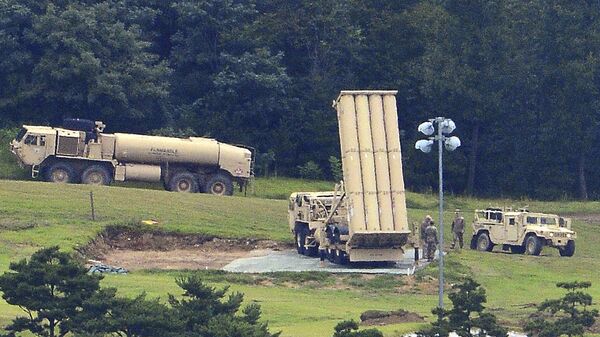The US military has reached out to Germany with a plan to install a missile defense system on its soil to reinforce European defenses, the New York Times has reported. According to the media, the preliminary discussions about testing the High Altitude Area Defense (THAAD) system took place before US President pulled out of the 2015 Iran nuclear deal.
A US military official told the newspaper that there had been preparatory talks with Germans over the relocation of a THAAD system to Rammstein Air Base in Germany, where the US Air Force in Europe and the NATO Allied Air Command have their regional headquarters. The existing base contracts imply that the US doesn’t need German approval, but that formal notification should be sent.
The pulling out of the accord alienated the transatlantic allies, as the Germany, France and the European Union supported it. This has reportedly given the momentum to these talks about sending the missile defense system to Europe. Although the US military has unsuccessfully pressed the European NATO allies for years, the parties allegedly came closest to the deal over growing fears of the Iranian missiles, which can allegedly reach countries in Southern Europe.
READ MORE: Poland Backs US on Iran Deal, Drifts Away From EU’s United Criticism
The newspaper has cited an anonymous high-ranking German military official as saying that more radar are needed across Europe to better monitor potential threats and intercept them. An unnamed US military source has also confirmed to a newspaper that German government is open to the move, which could protect their people. However, Pentagon spokesman Eric Pahon refuted the plans to deploy the THAAD systems in Germany at the time. The German foreign ministry also hasn’t confirmed that any signals about a possible deployment had been sent.
The discussion about the use of a THAAD system in Europe was also conducted in the context of increasing tensions between the NATO and Russia. The US media points out that although NATO insists that the European-stationed air defense units are not directed towards Russia, the recent talks came amid disagreement over NATO’s expansion in the Eastern Europe. NATO has been significantly expanding its presence there after the outburst of the Ukrainian crisis in 2014, using alleged Russian interference in the Ukrainian internal activities as a pretext. In May 2018 the Polish government has revealed it’s thinking over deploying a permanent US military base in Poland, which will cost the country $1.5-2 billion.
Both the US and European countries have also repeatedly expressed their concern over Russia's advanced weapons systems in Kaliningrad, including the S-400 air defense system. Moscow explained their stationing there with a desire to protect its exclave on the Baltic Sea at a time when the NATO forces are increasingly active in the region.
Tom Karako from the Center for Strategic and International Studies, cited by the New York Times, said the new US defense strategy highlighted a need to deter Russia, and an upcoming Pentagon missile defense review, which will be released in June, may connect this goal and the European-stationed air defense system.


